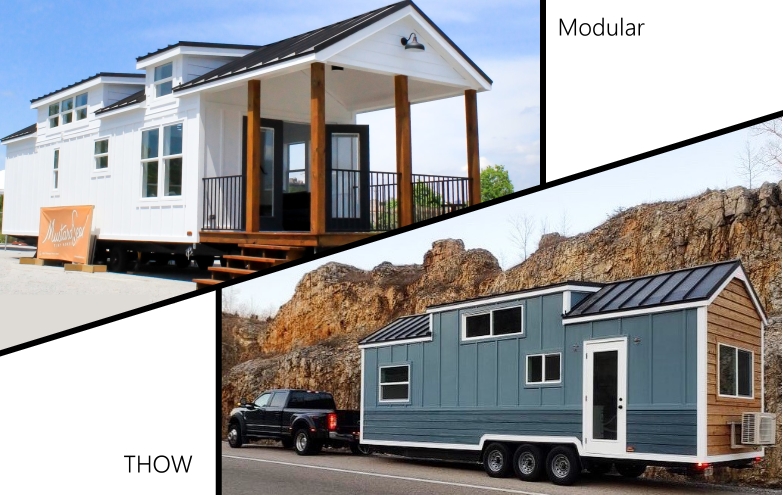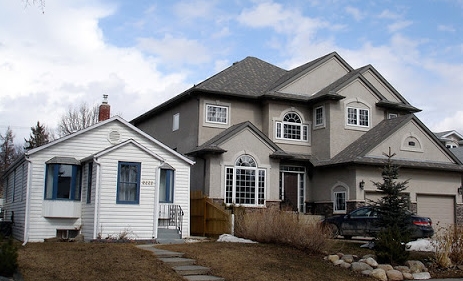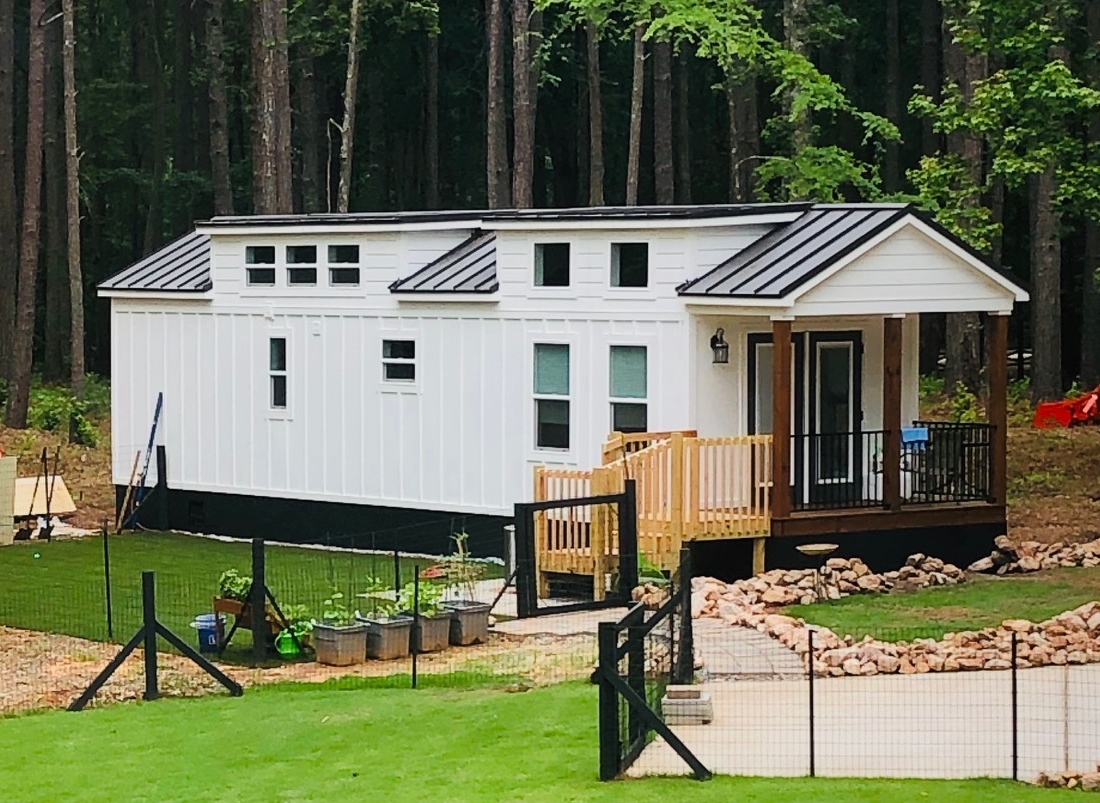
Since our beginnings here at Mustard Seed Tiny Homes, we’ve been steeped in the passion to create high quality, unique THOWs that transcend in both functionality and form. But, they are also supposed to be used as an affordable alternative to the big house trap. Downsize your lifestyle and upsize your freedom! Being able to live anywhere you park is an awesome notion. Being able to plugin or unplug brings a certain sense of independence and leaves you feeling like you have options – which you do! Let’s face it, for folks wanting to go tiny and save on overhead and overall debt, a THOW is the perfect solution.
Or, is it?
Turns out that out of the many thousands of inquiries and quotes requests we have received here at Mustard Seed Tiny Homes over the years, we learned something. Yes, we have a rapidly growing movement of people like you wanting to downsize. Yes you want more independence and the freedom of having lower overhead and less debt. Yes, you want less to maintain. And yes, you want the new options available to a family living the tiny house lifestyle. Which could be summed up with – more time, more money with less worry and strife. So wow, what a great opportunity to help people live better. So off we went, with smooth roads ahead. Then came a few turns in the road.
of having lower overhead and less debt. Yes, you want less to maintain. And yes, you want the new options available to a family living the tiny house lifestyle. Which could be summed up with – more time, more money with less worry and strife. So wow, what a great opportunity to help people live better. So off we went, with smooth roads ahead. Then came a few turns in the road.
Turns out about 83% of our inquiries wanted to live tiny full-time in a THOW. But, they wanted to do it on their own property, or their families property, or as an accessory dwelling unit (ADU). That meant that over 8 out of 10 families wanted to use their THOW as a residence or ADU on private property. What a great idea! But not so fast. Speed bump ahead.
So far, more than 90% of our clients who want to put their THOW on private property to use as a residence or ADU – were not allowed to do it. WHAT? “I can’t put my tiny house on my own property? Says who?” That’s right, you guessed it. The local government. Which comes in the form of your local Planning & Zoning (P&Z), and Building Safety offices. Apparently, while many of them are “woke” when it comes to living tiny with a smaller square footage home, they still have rules about how you can do it.
These rules differ from one city, county and state to another. But they all usually have stuff like minimum square footage requirements, a foundation system which meets building code, utility hookups with sewer/septic system requirements, permits, etc, etc. You get the idea. It seems they are moving us in the direction of the “big house trap”.  But, when you consider that the big house realm is all they know, it makes sense that all the “house rules” are for “building houses on foundation”. When it comes to a municipality making rules, then maintaining property values and safety have to be at the forefront of policy making.
But, when you consider that the big house realm is all they know, it makes sense that all the “house rules” are for “building houses on foundation”. When it comes to a municipality making rules, then maintaining property values and safety have to be at the forefront of policy making.
So the big question is: Can a tiny house on wheels (THOW) be used as a primary residence for your family or ADU on your private property? In our experience, over 90% of the time, the answer is NO. THOWs are not permanent buildings. Your local P&Z office looks at a THOW pretty much like an RV. Afterall, if there is no permanently placed house on the property, that means it’s not considered real estate. That means it can’t be locally regulated for value and safety , and it can’t be taxed. A Planning & Zoning office is there to, among other things, segregate property use and manage the optimal use of land. Both of which can also help local property values. If it’s sounding like the deck is stacked against using a Tiny House on Wheels as a permanently placed residence…that’s because it is. But it’s not a conspiracy. THOWs are relatively new. Real estate and P&Z offices have been around since deeds and politicians were invented.
So what is the hopeful THOW owner to do? Well, if you’re in the single digit percentage of those who wanted to use their tiny house as an actual traveler to spend your life touring, then you are good to go with a THOW. But, if you are in that 80+ percentile who want to live tiny on their own property,  it turns out there is a better solution. And like a few others out there, we have found it in a very organic way…over time. It’s called a Modular Tiny House. A modular home fits neatly into the current real estate and zoning paradigm that currently runs the world of housing. It’s just that we make them smaller.
it turns out there is a better solution. And like a few others out there, we have found it in a very organic way…over time. It’s called a Modular Tiny House. A modular home fits neatly into the current real estate and zoning paradigm that currently runs the world of housing. It’s just that we make them smaller.
A modular tiny house is custom built in our shop, then transported and arrives on wheels. But once it arrives, it is set up on your property on a lawful foundation built to code. Without its wheels, axles or tongue. It turns out that modular homes can also be small. Even tiny. How tiny depends on how “tiny house friendly” your local Planning & Zoning is. But more and more we are finding that minimum square footage requirements that would prevent a tiny home are being lifted by many local P&Z departments for modular tiny homes. You might even say it is a movement. This is because they know this movement is inevitable. With the housing crisis, skyrocketing home prices and the economic challenges looming, people are looking to get safe. And if a local official won’t let them, folks can just vote themselves in new ones that will. See how that works? And it is working all over the country. There are those 100 year old ordinances still on the books of many municipalities out there. Which are staffed by thinkers almost as old. But by and large most are evolving. Maybe even one day in the not too distant future, they will finally let us live in a THOW on our own property. But until then, if you are in that 80+ percentile looking to go tiny on your own land, we have a solution. If your local P&Z won’t allow a tiny house on wheels (THOW) as a residence on your property, ask them this question. What about a small modular home? The answer to this question has literally unlocked tiny living on private property for the vast majority of our clients who want to live small on their own land. And it could be the answer for you.
So what’s the deal with Modular Tiny Homes? The short version is:
Modular homes are regulated by the government. Our modular tiny homes conform to local and state building code and laws.
Higher quality build and craftsmanship. Our homes are built in a controlled environment under strict state enforced quality control procedures. All our homes are inspected and certified by a third party engineering firm which represents your state.
Our homes arrive as a single piece module, ready to set up and live in.
Faster construction time with no weather delays.
Superior strength over stick built homes.
Modular tiny homes cost much less than a site-built home.
Customization and the flexibility to introduce innovative design features.
Environmentally friendly as we utilize green guard products in our home. And our homes have a higher energy efficiency for your climate zone.
Modular tiny homes can be larger than THOWs and Park Models (400-700+ sqft).
Modular tiny homes appreciate in value like a regular site-built home and increase the value of your property. Depending on how they’re built, THOWs and Park Models can depreciate like RVs.
Modular tiny homes may cost a bit more than a THOW, but have 60%+ more living space. They’re just more “livable” while keeping true to the tiny house purpose.
Modular tiny homes still provide the lower overhead and less debt that tiny house buyers are looking for.
Financing: We have found outstanding financing for modular tiny homes. This financing will get your home built, transported and set up on your property. It can even cover utility infrastructure and other on-site needs. Once your modular home is installed on your property, it can qualify for a standard home mortgage.
So, is modular what you need? If you want to live in your tiny house on your own private property, it might be. Depending on your local P&Z ordinances, it may be your best solution. Check out our Modular Home Buying Process for more information about our modular tiny homes. This describes the steps we go through to deliver this tiny home solution to you.
Stay tuned for more. Let us know if you have questions. We’re here to help! And remember, Big Change Starts Small.
